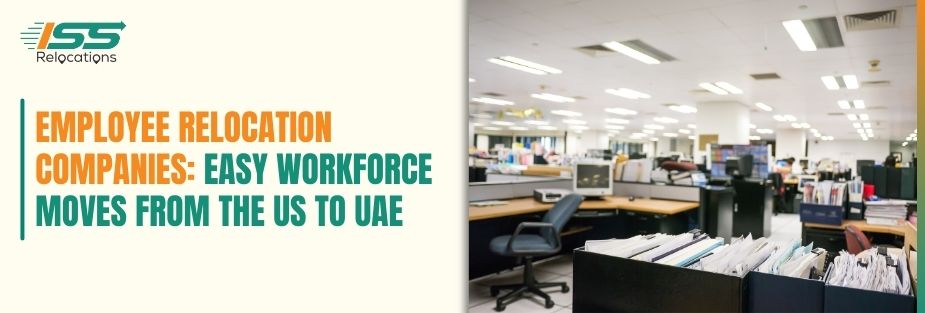
Minimizing Downtime: Strategies for a Seamless Office Relocation
Office relocation can be a daunting task, especially if not planned correctly. The relocation process involves moving a lot of equipment, including IT infrastructure, furniture, and other sensitive items. However, for businesses to minimize the impact of relocation, it is crucial to ensure that downtime is minimized. Downtime refers to the period when business operations are affected due to the relocation process. This can lead to significant financial losses, decreased productivity, and reduced customer satisfaction. Therefore, it is essential to have a solid plan in place that will help minimize downtime during the seamless office relocation process.
ISS Relocations is a professional relocation company that provides end-to-end relocation services to businesses. They specialize in moving office equipment and heavy machinery to different locations, both locally and internationally. They are known for their efficient and reliable relocation services that ensure no damage is done to the items being moved. ISS Relocations provides a range of services, including inventory management, packing, and unpacking of items, transportation, and setting up of equipment at the new location. They also offer support and guidance throughout the relocation process, making it hassle-free for businesses.
Ready To Relocate?
Explore smart ways to keep operations running during a move
Planning Phase
A. Conducting a comprehensive inventory
Before relocating an office, it is important to conduct a comprehensive inventory of all the equipment, furniture, and other items that will be moved. This will help businesses understand the scope of the relocation project and plan accordingly. Conducting an inventory will also help identify any items that require special handling, packing, or transportation.
B. Creating a detailed relocation plan
Once an inventory is conducted, the next step is to create a detailed relocation plan. The plan should include all the tasks that need to be completed before, during, and after the move. It should also include a timeline for each task and the resources required to complete them. Creating a detailed plan will help ensure that the relocation process is smooth and efficient.
C. Choosing the right relocation partner
Choosing the right relocation partner is crucial to the success of the relocation project. Businesses should consider partnering with a reliable and experienced relocation company like ISS Relocations. The relocation partner should have a proven track record of successfully relocating offices without causing any downtime or damage to equipment.
D. Assigning roles and responsibilities
Assigning roles and responsibilities is crucial to ensuring that the relocation process is efficient and effective. Businesses should create a team to oversee the relocation process and assign specific tasks to team members. This will help ensure that all tasks are completed on time and nothing falls through the cracks.
Dial For Assistance!
Pre-Move Phase
A. Communication plan with employees and stakeholders
Communication is key during the pre-move phase. Businesses should create a communication plan that includes regular updates to employees and stakeholders. The plan should include information about the relocation process, the timeline, and any changes that may occur. Clear communication will help reduce stress and anxiety among employees and stakeholders.
B. Conducting training sessions for employees
Employees should be trained on how to prepare for the relocation process. They should be provided with information about how to pack their personal items and any equipment they are responsible for. They should also be informed about the new location and any changes that may occur.
C. Coordinating with utility providers
Businesses should coordinate with utility providers to ensure that utilities are disconnected at the old location and connected at the new location. This should be done well in advance to ensure that there are no disruptions to business operations.
D. Testing and verifying IT infrastructure
Testing and verifying IT infrastructure is crucial to ensuring that there are no interruptions to business operations. Businesses should test and verify all IT equipment, including servers, printers, and other devices. They should also ensure that the new location has the necessary infrastructure to support their IT needs. This may involve installing new internet connections, setting up Wi-Fi networks, and configuring firewalls and security systems.
Moving Phase
A. Proper labelling and packing of equipment
Proper labelling and packing of equipment are essential to ensure that everything is organized and easily accessible at the new location. Businesses should use high-quality packing materials and label each box or container with its contents and the room it belongs in. This will help ensure that items are unpacked and set up quickly and efficiently.
B. Coordinating transportation
Coordinating transportation is a critical part of the relocation process. Businesses should work with their relocation partner to ensure that all items are transported safely and securely. They should also consider the logistics of the move, including the route, the timing, and any potential obstacles.
C. Monitoring the progress of the move
Businesses should monitor the progress of the move to ensure that everything is going according to plan. They should stay in contact with their relocation partner and track the movement of their items using GPS tracking devices or other methods.
D. Unpacking and setting up equipment at the new office
Unpacking and setting up equipment at the new office should be done quickly and efficiently to minimize downtime. Businesses should have a plan in place for where each item will go and how it will be set up. This will help ensure that business operations can resume as quickly as possible.
Post-Move Phase
A. Conducting a walkthrough of the new office
After the move, businesses should conduct a walkthrough of the new office to ensure that everything is in its proper place. This will also provide an opportunity to identify any damage or issues that need to be resolved.
B. Testing and verifying IT infrastructure at the new office
Testing and verifying IT infrastructure at the new office is crucial to ensuring that everything is working properly. Businesses should test all equipment and systems to ensure that there are no disruptions to business operations.
C. Resolving any issues or problems that arise
If any issues or problems arise during or after the relocation process, businesses should work with their relocation partner to resolve them quickly and efficiently. This may involve repairing or replacing damaged equipment, addressing connectivity issues, or resolving any other problems that arise.
D. Ensuring business operations return to normal
Once everything is set up and working properly, businesses should ensure that their operations return to normal as quickly as possible. This may involve notifying customers, suppliers, and other stakeholders about the new location and any changes that may occur.
Conclusion
A. Summary of key points
Minimizing downtime during office relocation is crucial to the success of the process. Businesses can achieve this by conducting a comprehensive inventory, creating a detailed relocation plan, choosing the right relocation partner, assigning roles and responsibilities, communicating with employees and stakeholders, coordinating with utility providers, testing and verifying IT infrastructure, labeling and packing equipment properly, coordinating transportation, monitoring the progress of the move, unpacking and setting up equipment at the new office, conducting a walkthrough of the new office, testing and verifying IT infrastructure at the new office, resolving any issues or problems that arise, and ensuring business operations return to normal.
B. Emphasis on the importance of a seamless office relocation
A seamless office relocation can have a significant impact on the success of a business. It can reduce stress and anxiety among employees and stakeholders, minimize downtime and financial losses, and ensure that business operations can resume quickly and efficiently. Therefore, businesses should invest time and resources into planning and executing a seamless office relocation.
C. Reiteration of the benefits of working with a reliable relocation partner like ISS Relocations
Partnering with a reliable and experienced relocation company like ISS Relocations can provide numerous benefits to businesses. ISS Relocations offers end-to-end relocation services, including inventory management, packing and unpacking, transportation, and setup of equipment at the new location. Here are some of the benefits of working with ISS Relocations:
Professional Expertise: ISS Relocations has years of experience in handling office relocations. They understand the importance of minimizing downtime and have the expertise to execute a seamless office relocation.
Tailored Services: ISS Relocations offers customized solutions to meet the specific needs of each business. They work closely with their clients to understand their requirements and design a relocation plan that suits their needs.
Reduced Downtime: With ISS Relocations, businesses can minimize downtime during the relocation process. They have a team of experts who can handle all aspects of the relocation, from planning to setup, to ensure a smooth transition.
Risk Management: ISS Relocations takes great care in ensuring that all equipment is packed and transported safely. They have measures in place to prevent damage to equipment during transportation and will also provide insurance coverage for added protection. Cost-Effective: While it may seem like a costly investment to hire a professional relocation company, the cost of downtime and potential damage to equipment during an office relocation can be much higher. ISS Relocations offers cost-effective solutions that can help businesses save time and money in the long run.
Plan Stress-free Move with Top Moving Company in UAE - ISS Relocations

Frequently Asked Questions
How do you plan an office relocation?
Planning an office relocation involves setting a budget, selecting a reliable moving service, informing employees and clients, and ensuring minimal downtime. ISS Relocations provides comprehensive office moving services, from logistics to setup, to ensure a smooth transition.
How do you estimate the cost of moving an office?
The cost depends on factors like office size, equipment, distance, and additional services such as packing and IT setup. ISS Relocations offers tailored cost assessments to help businesses budget efficiently while ensuring a hassle-free relocation.
What is office relocation?
Office relocation is the process of moving a business from one location to another. It involves packing, transportation, and setting up the new space with minimal operational disruptions. ISS Relocations specializes in seamless office relocation, handling all aspects professionally.
What is the meaning of relocation services?
Relocation services refer to professional assistance in moving individuals or businesses from one location to another. ISS Relocations provides end-to-end services, including packing, transportation, and settling-in support for businesses and employees.
What is a standard relocation package?
A standard relocation package includes moving expenses, packing and unpacking, temporary housing, and sometimes assistance with setting up utilities. ISS Relocations offers customized office relocation packages tailored to business needs, ensuring a seamless transition.
How does a relocation company work?
A relocation company manages all aspects of moving, from planning and packing to transportation and setup at the new location. ISS Relocations offers expert office relocation services to minimize downtime and ensure a smooth move.
What is the relocation process?
The relocation process includes planning, packing, transportation, unloading, and setting up in the new location. ISS Relocations handles every step, ensuring a hassle-free office move with minimal disruption to business operations.
Moving Company - Recent Blog
Stay informed and prepared for your next move with our latest blogs on moving services in the UAE. From expert packing tips to international relocation guides, ISS Relocations brings you up-to-date insights to make your moving experience smoother, safer, and stress-free.










